Location: Poland
Client: Tubadzin.co
Completed: 2022
Area: 100m²
Design Team: Ramin Poorkeivan - Shahin Afarin - Hedieh Boroumand - Marzieh Rezazadeh - Sina Alavi - Hanieh Mohamadi - Sadaf Rahmani
Carpet-Form
The ritual gathering is one of the important aspects of Iranian culture in the past. Iranians gathered around in various places such as worship places and urban areas. Architectural and urbanization changes have caused the reduction of such spaces and ultimately the devaluation of human communities in the last decades.
Persian carpet, as one of the main cultural samples, represents the cultural features of the society. The Pazyrik (the oldest Persian carpet) is a vision of Zoroastrianin paradise gardens. Each carpet is the reason for people to gather around as a community. In our design, we have used the composition, hierarchy and motifs of the Pazyrik carpet. This project is a critique of the missing connection between humans and nature in today’s society. It attempts to increase amenities in urban spaces as milestones and units of social communication.
In the Mehr religion, the oldest religion in Iran, the topic of women has been mentioned many times. According to mythological writings, the God of Mehr was born on a lotus flower. The lotus flower, the symbol of Anahita, the goddess of water, is seen in the carpet’s motifs and architectural reliefs. According to the recent protests with the slogan of women, life, freedom and also Mehr's special attention to the position of women, choosing the lotus flower was one of the main ideas of our design. Chartaqi, the Mehr rituals worship place and the lotus flower are both rooted in water as a transparent element.
Chartaqi as a place of worship for the Mehr ritual and the lotus flower are both rooted in water as a transparent element.
According to the concepts raised, this project has a portable structure and modular form that can be carried and installed in any urban spaces. It consists of 3 modules whose form is a recreation of the form of the Chartaqi. One of the modules provides shaded seating and resting area, and the other two modules, in two separate scales, are green spaces. The arrangement of these 3 units together can create different spatial qualities, such as communal or individual spaces. Regarding the completion of the concept form - carpet, water and glass have been used as an element of transparency. Also, vertical and horizontal threads inside the frame of the modules are a reminder of carpet texture. The approach used is to induce the most sense of connection with the carpet's appearance and concept.
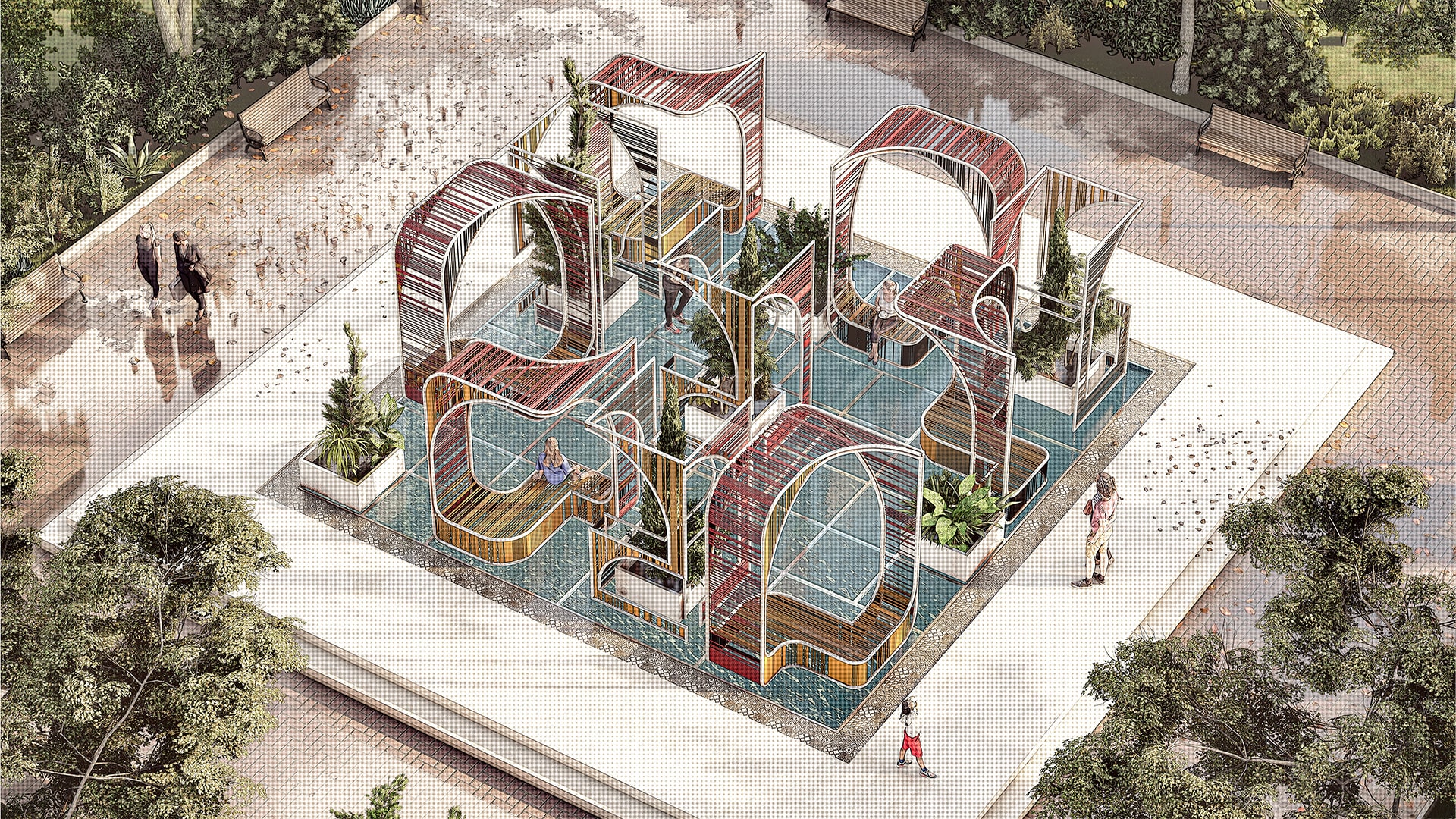
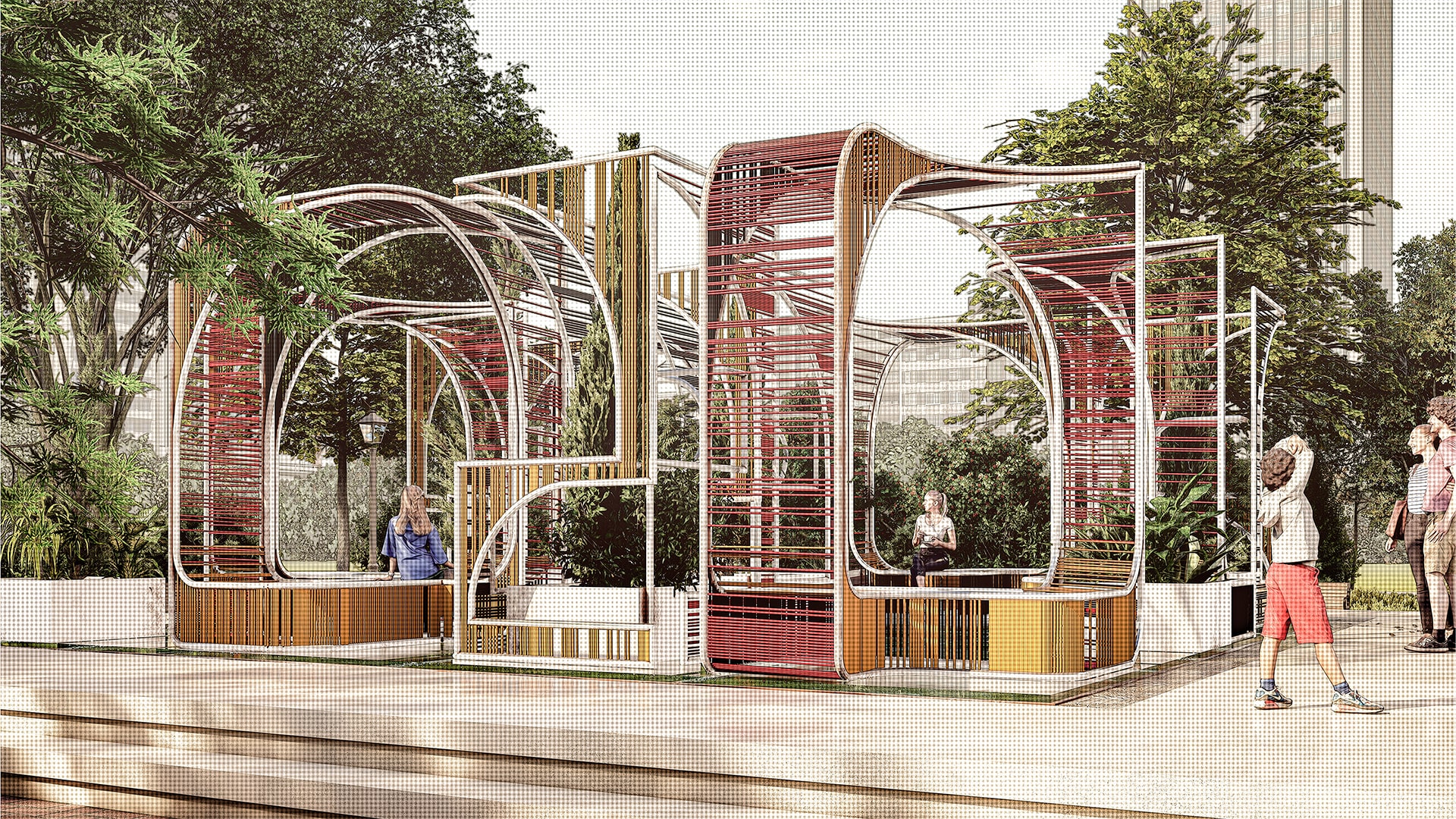 Exterior View
Exterior View
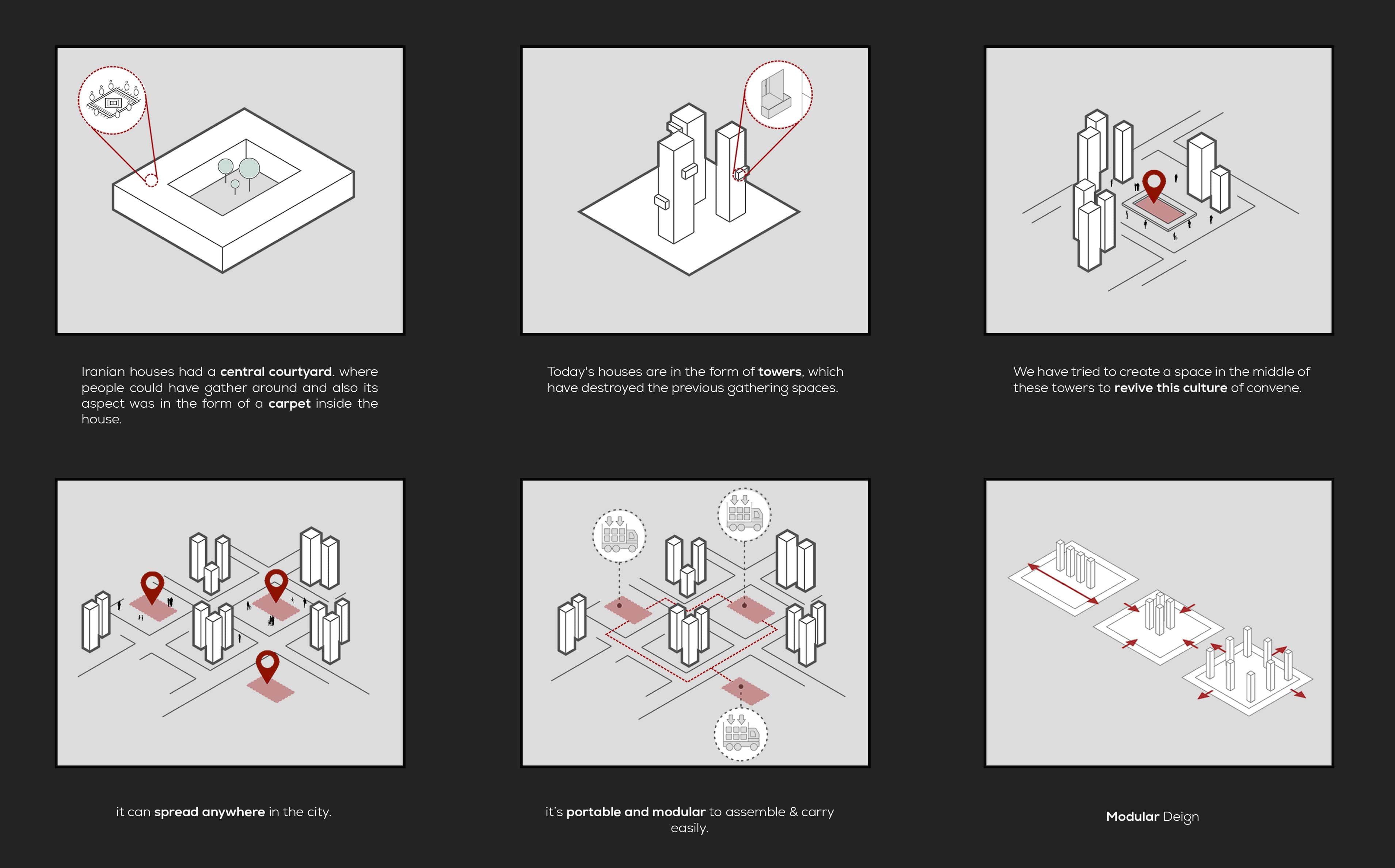 Design Process
Design Process
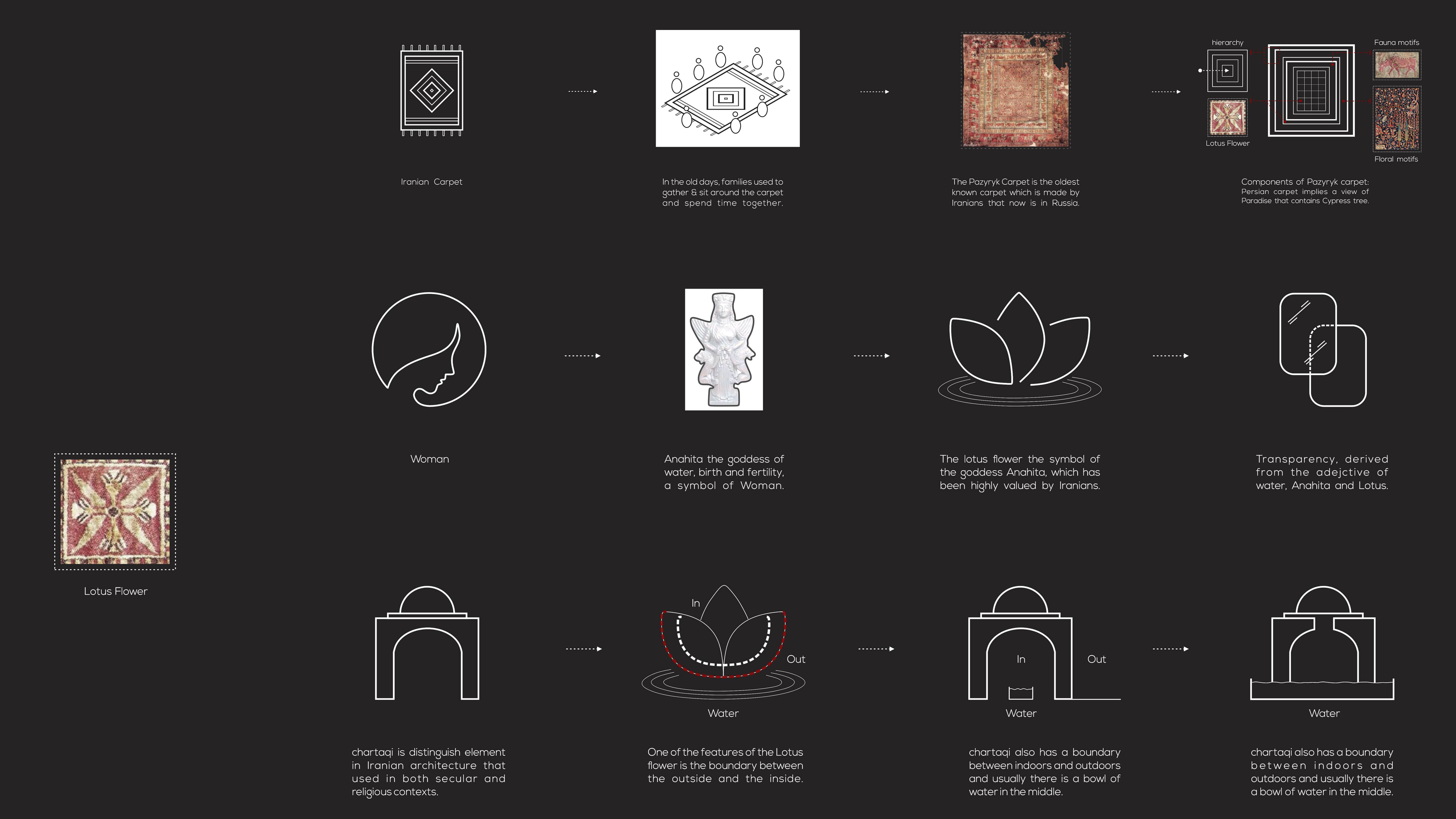 Design Process
Design Process
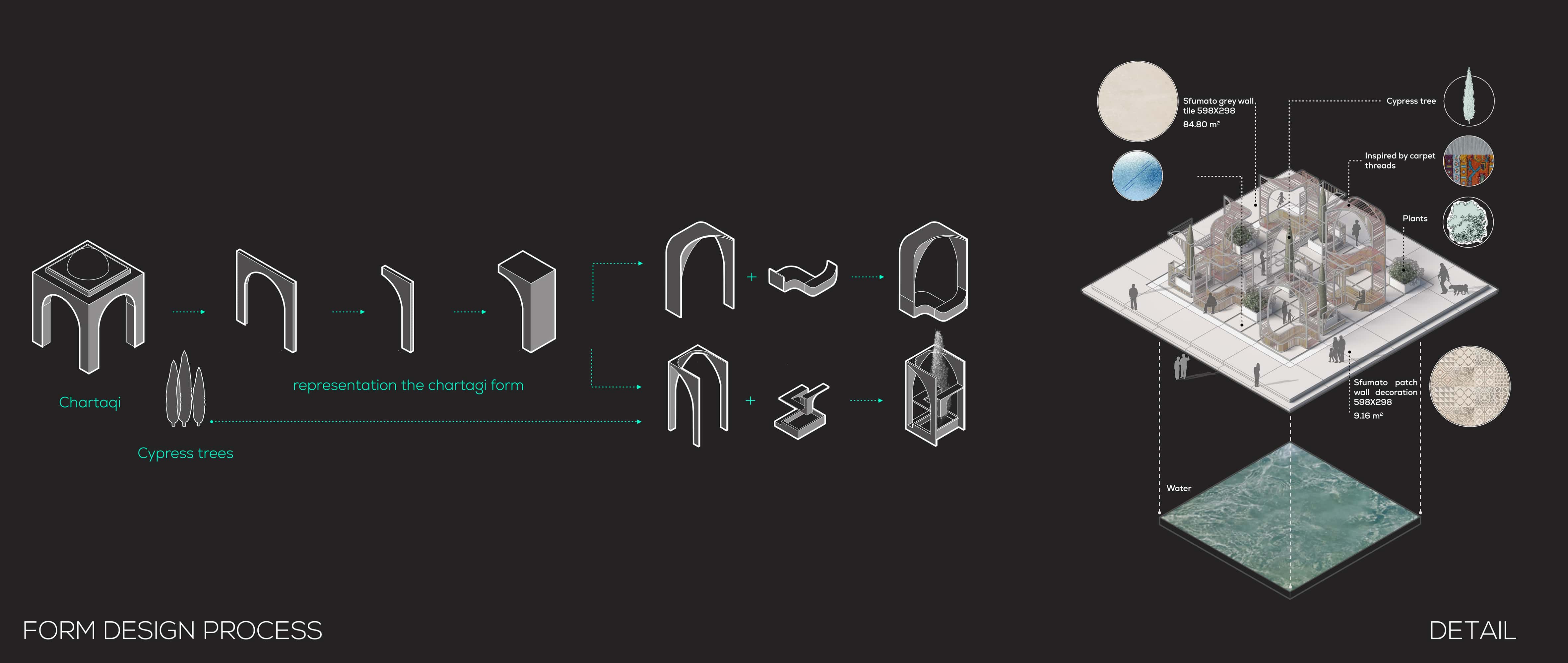 Design Process
Design Process
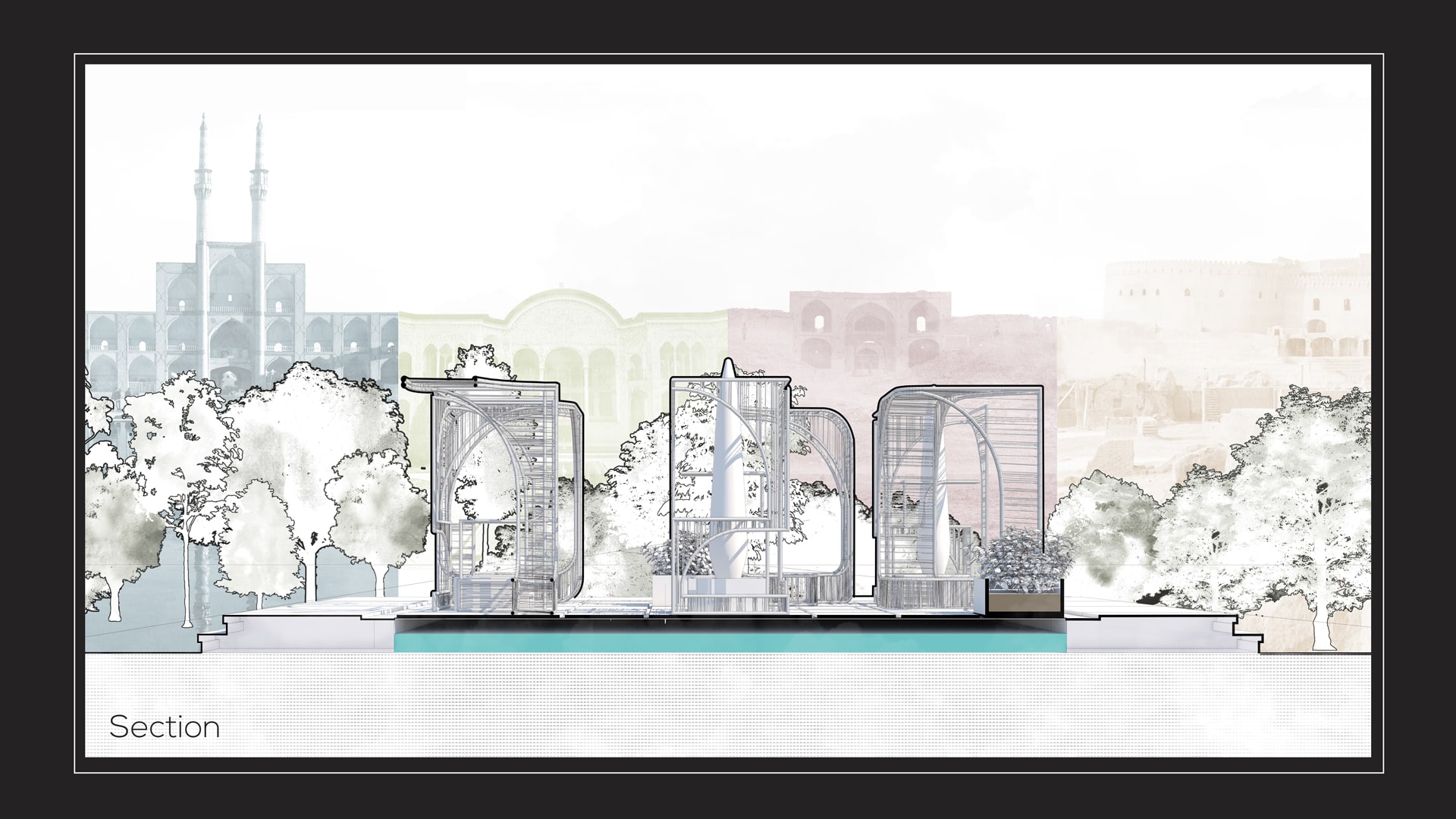 Section
Section
